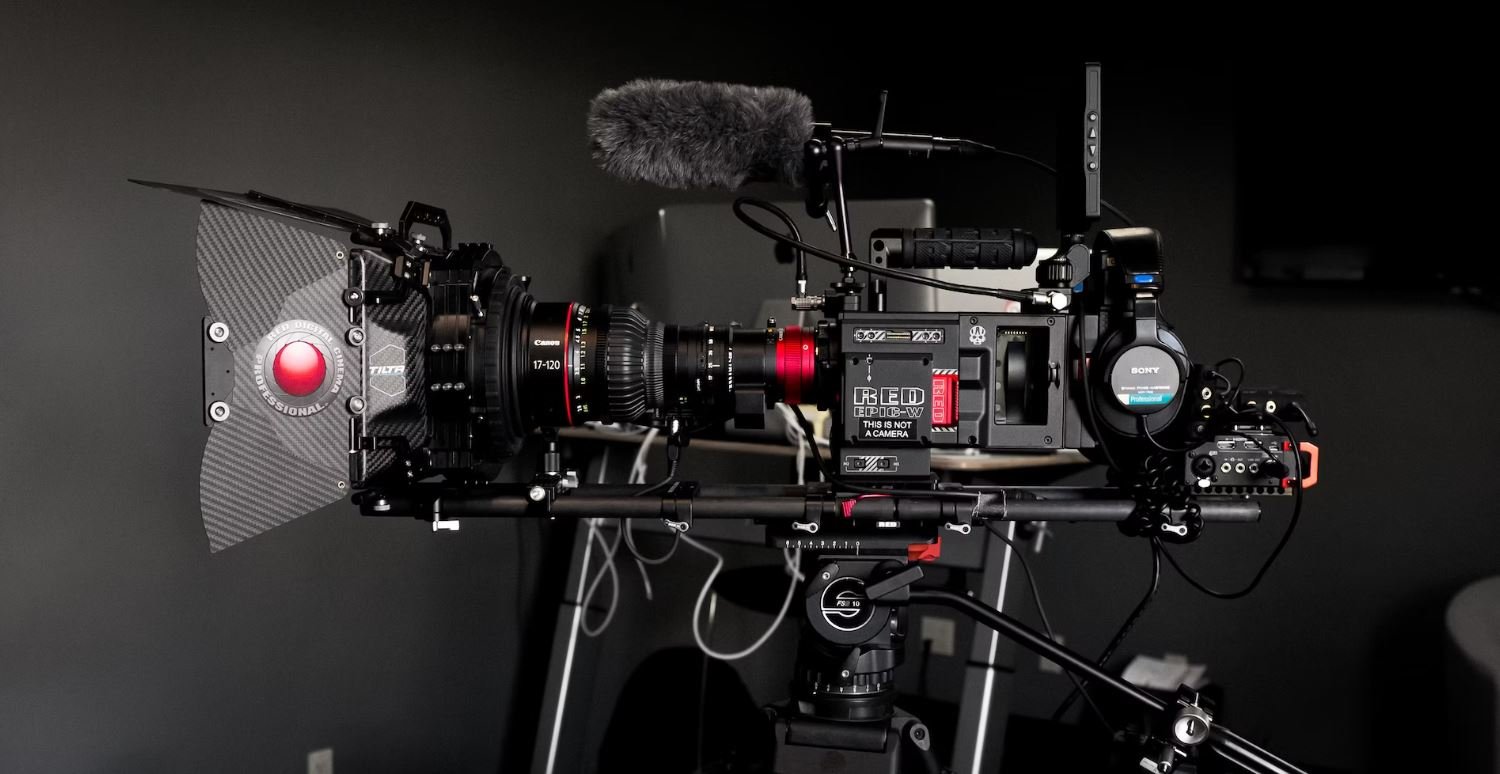Music History Timeline
Introduction
Music has been an integral part of human culture for centuries. It has evolved and transformed over time, reflecting societal changes and technological advancements. Understanding the timeline of music history helps us appreciate the diverse musical traditions that have shaped the world we live in today.
Key Takeaways
- Explore the evolution of music through different eras and civilizations.
- Understand the impact of technological advancements on music production and distribution.
- Recognize the influence of various cultures on musical genres and styles.
- Discover notable composers, musicians, and influential musical movements.
Ancient and Medieval Music
Ancient music can be traced back to the early civilizations of Mesopotamia and Egypt, where it played a central role in religious rituals and ceremonies. *Greek music, with its focus on harmony and mathematical precision, laid the foundations for Western classical music*.
Table 1: Ancient and Medieval Music
| Civilization | Noteworthy Features |
|---|---|
| Egypt | Hymns and songs dedicated to gods and pharaohs, use of harps and flutes. |
| Greece | Development of musical notation, introduction of music theory. |
| Medieval Europe | Growth of Christian liturgical music, emergence of troubadour and trouvère songs. |
The Renaissance and Baroque Periods
The Renaissance period witnessed a revival of interest in *Greek and Roman artistic forms*, leading to a flourishing of music characterized by intricate polyphony. The Baroque era saw the rise of opera, the development of instrumental music, and the establishment of tonal harmony.
Table 2: The Renaissance and Baroque Periods
| Period | Key Features |
|---|---|
| Renaissance | Polyphonic vocal music, exploration of new musical forms. |
| Baroque | Orchestra and instrumental music, focus on drama and emotion, emergence of opera. |
The Classical and Romantic Eras
The Classical period, represented by composers such as Mozart and Haydn, emphasized clarity, balance, and simplicity. In contrast, the Romantic era, epitomized by Beethoven and Chopin, delved into intense emotions, individual expression, and virtuosity. *This era saw the rise of nationalism and the emergence of programmatic music*.
Table 3: The Classical and Romantic Eras
| Era | Characteristics |
|---|---|
| Classical | Clear formal structures, elegant melodies, homophonic texture. |
| Romantic | Expressive music, dynamic contrasts, exploration of individual emotions. |
The 20th Century and Beyond
The 20th century marked a period of unprecedented experimentation and innovation in music. *From the avant-garde movements of impressionism and expressionism to the emergence of jazz, rock ‘n‘ roll, and electronic music*, this era pushed the boundaries of traditional genres and embraced new technologies.
- The development of recording technology revolutionized music production and distribution.
- The emergence of jazz and blues paved the way for popular music genres like rock ‘n’ roll and hip hop.
- Electronic instruments and computer technology brought about new possibilities in sound creation and manipulation.
Conclusion
Music history is a rich tapestry that weaves together various cultures, artistic movements, and technological advancements. By delving into the timeline of music, we gain a deeper understanding and appreciation for the diverse and evolving nature of this universal language.

Common Misconceptions
Misconception 1: Music history started with Classical music
- Music history begins with ancient civilizations such as Mesopotamia and ancient Egypt.
- Folk and tribal music played a crucial role in shaping music history before the advent of Western classical music.
- Genres like jazz, rock, and blues also have significant contributions to the evolution of music history.
Misconception 2: Music history is solely dominated by Western music
- Eastern music traditions, such as Indian classical music, Chinese classical music, and Japanese traditional music, have rich and diverse histories.
- African music has influenced various genres worldwide, including reggae, hip-hop, and pop music.
- Music from indigenous cultures all over the world has contributed to the global music history timeline.
Misconception 3: The development of music is linear and progressive
- Music history is marked by various periods and movements, showcasing the cyclical nature of development.
- Musical innovations often emerge from experimentation, fusion of different styles, and borrowing from the past.
- There are periods in the history of music where rediscovering and imitating earlier music styles were prevalent.
Misconception 4: Music history is elitist and focused on famous composers
- Music history encompasses a wide range of people, including performers, composers, producers, engineers, and listeners.
- Popular music has played a significant role in shaping culture and society, with its own important place in music history.
- Many non-Western traditions rely heavily on oral transmission and collective participation rather than individual composers.
Misconception 5: Music history is a closed book and has reached its ultimate form
- New technological advancements continuously reshape music history, from the introduction of recorded sound to the digital age.
- Globalization and cultural exchange constantly contribute to the evolution and diversification of music history.
- The future of music history is open-ended, with an infinite potential for new genres, styles, and creative expressions.

Introduction
Music has been an integral part of human civilization for centuries, serving as a medium of expression, entertainment, and cultural preservation. From ancient musical traditions to contemporary genres, the evolution of music has shaped societies and reflected the changing times. In this article, we present a captivating Music History Timeline through a series of interactive and enlightening tables. Let’s delve into the fascinating journey of music!
1. Early Musical Instruments
The earliest known musical instruments date back to around 40,000 BCE. These instruments were primarily made of bone, horn, and wood, expressing the creativity and ingenuity of our early ancestors. Here is a glimpse of some remarkable early musical instruments:
| Instrument | Origin | Description |
|---|---|---|
| Didgeridoo | Australia | An ancient wind instrument made from eucalyptus tree trunks, producing mesmerizing low-pitched sounds. |
| Shofar | Israel | A ram’s horn used in Jewish religious ceremonies, creating powerful and symbolic tones. |
| Xun | China | A clay flute known for its hauntingly beautiful melodies, favored during ancient Chinese rituals. |
2. Classical Music Era – Famous Composers
The Classical Music Era, spanning from the 1730s to the early 1820s, witnessed an explosion of musical geniuses who created timeless masterpieces. Here are three influential composers from this era and their notable contributions:
| Composer | Years Active | Notable Works |
|---|---|---|
| Wolfgang Amadeus Mozart | 1756-1791 | Requiem Mass in D minor, Symphony No. 40, The Magic Flute |
| Ludwig van Beethoven | 1770-1827 | Symphony No. 9, Moonlight Sonata, Fidelio |
| Joseph Haydn | 1732-1809 | The Creation, Symphony No. 94, String Quartet Op. 76 |
3. Influential Music Albums of the 20th Century
The 20th century revolutionized music through the birth of popular music genres and the rise of iconic albums. These albums not only defined their respective genres but also had a profound impact on society. Here are three influential albums that left an indelible mark on music history:
| Album | Artist | Genre | Year Released |
|---|---|---|---|
| Sgt. Pepper’s Lonely Hearts Club Band | The Beatles | Rock | 1967 |
| Thriller | Michael Jackson | Pop | 1982 |
| Kind of Blue | Miles Davis | Jazz | 1959 |
4. Evolution of Digital Music Formats
The advent of digital technology revolutionized the music industry, allowing for new formats that transformed the way we consume music. Here is a chronological overview of the evolution of digital music formats:
| Format | Year Introduced | Main Advantages |
|---|---|---|
| MP3 | 1993 | Significantly smaller file size compared to CDs, easy online sharing and streaming. |
| iTunes Store | 2003 | Legal and convenient digital music purchasing, access to a vast catalog of songs. |
| Streaming Services (e.g., Spotify) | 2008 | Instant access to an extensive music library, personalized playlists, and discovery features. |
5. Top-Selling Music Artists of All Time
Some music artists have achieved extraordinary commercial success, captivating millions of listeners and leaving an enduring impact. Here is a glimpse of the top-selling music artists of all time:
| Artist | Genre | Album Sales (Estimated) |
|---|---|---|
| The Beatles | Various | 600 million+ |
| Elvis Presley | Rock ‘n’ Roll | 600 million+ |
| Michael Jackson | Pop | 350 million+ |
6. Emergence of Hip-Hop as a Cultural Phenomenon
Hip-hop, originating in the Bronx during the 1970s, quickly transcended its roots to become a global cultural force. Here are three influential hip-hop artists who contributed to the genre’s rise:
| Artist | Active Years | Signature Songs |
|---|---|---|
| Grandmaster Flash and the Furious Five | 1978-1983 | The Message, White Lines |
| Tupac Shakur | 1991-1996 | California Love, Changes |
| Notorious B.I.G. | 1992-1997 | Juicy, Hypnotize |
7. Global Pop Icons – Music and Cultural Influence
Some music artists transcend national and cultural boundaries, becoming global pop icons. Their influence extends beyond music, shaping fashion, art, and societal attitudes. Here are three significant global pop icons:
| Artist | Country | Notable Achievements |
|---|---|---|
| Madonna | United States | Best-selling female recording artist, cultural provocateur, and trendsetter. |
| Bob Marley | Jamaica | Reggae pioneer, advocate for social justice, and global symbol of peace and unity. |
| BTS | South Korea | Global K-pop sensation, breaking records, and fostering cross-cultural connections. |
8. Musical Instruments in Different Cultures
Music thrives in diverse cultures worldwide, with each region exhibiting unique musical traditions and instruments. Here are three extraordinary musical instruments from different cultures:
| Instrument | Origin | Description |
|---|---|---|
| Sitar | India | A complex string instrument renowned for its distinctive sound and expressive capabilities. |
| Taiko Drums | Japan | Powerful drums used in traditional Japanese music, their booming beats captivating audiences. |
| Pan Flute | South America | An ancient wind instrument composed of multiple pipes, creating soothing and melodious tones. |
9. Women Pioneers in Music
Throughout history, remarkable women have shattered gender barriers and made significant contributions to the world of music. Here are three influential women pioneers:
| Artist | Genre | Notable Achievements |
|---|---|---|
| Billie Holiday | Jazz/Blues | Trailblazing jazz vocalist, known for her distinctive voice and emotionally charged performances. |
| Aretha Franklin | Soul/R&B | Queen of Soul, unparalleled vocal range, and iconic hits advocating for empowerment. |
| Joni Mitchell | Folk/Rock | Gifted singer-songwriter, known for her poetic lyrics and innovative guitar tunings. |
10. Impact of Music on Mental Health
Music has proven to have profound effects on our emotional well-being and mental health. Here are three therapeutic benefits of music:
| Benefit | Description |
|---|---|
| Stress Reduction | Listening to music can lower cortisol levels, providing a calming effect on the mind and body. |
| Mood Elevation | Music has the power to uplift our spirits, increase dopamine production, and enhance mood. |
| Enhanced Cognitive Function | Engaging with music stimulates various regions of the brain, potentially improving memory and concentration. |
Conclusion
The journey of music through the annals of time encompasses an extraordinary tapestry of melodies, rhythms, and stories. From ancient instruments to digital revolutions, from classical masterpieces to global pop icons, and from cultural pioneers to deeply therapeutic effects, music has continuously shaped our world. Each table in this Music History Timeline offers a glimpse into the vast and captivating realm of music. Let us celebrate the rich tapestry of musical expression that has resonated through centuries, illuminating our lives and connecting us on a profound level.
Frequently Asked Questions
What is the history of music?
The history of music dates back thousands of years, with evidence of musical instruments and vocal techniques found in ancient civilizations such as Egypt, Mesopotamia, and China. Over time, different cultures and regions developed their own unique styles and genres of music, leading to the diverse range of musical expressions we have today.
When did music first emerge as an art form?
Music as an art form emerged in ancient civilizations, but its exact origins are difficult to define. The earliest known musical notation comes from Sumerians in Mesopotamia around 2000 BCE, while vocal music likely predates this. However, music has likely been an integral part of human society since the prehistoric era, serving a variety of social, cultural, and ceremonial purposes.
Who were some influential composers in music history?
Throughout history, numerous composers have greatly influenced the development of music. Some notable figures include Ludwig van Beethoven, Wolfgang Amadeus Mozart, Johann Sebastian Bach, Franz Schubert, and Johann Strauss II. These composers made significant contributions to various musical genres, from classical symphonies to operas and chamber music.
What musical movements have shaped the history of music?
Several musical movements have shaped the history of music. These include the Renaissance, Baroque, Classical, Romantic, and 20th-century modernism. Each movement introduced new artistic approaches, techniques, and styles, reflecting the cultural, social, and technological changes of their respective time periods.
What impact did technology have on music history?
Technology has had a profound impact on the history of music. The invention of the phonograph by Thomas Edison in the late 19th century revolutionized the way music was recorded and distributed. Later advancements, such as radio, television, and the internet, further transformed the accessibility and reach of music, allowing for new genres and global exchange of musical ideas.
How did music evolve with cultural and societal changes?
Music has been closely intertwined with cultural and societal changes throughout history. It has often served as a means of expressing and reflecting the values, beliefs, and experiences of different communities. For example, the emergence of jazz in the early 20th century reflected the African American struggle for equality and became a symbol of cultural liberation.
What are some notable milestones in music history?
There have been numerous notable milestones in music history. Some examples include the premiere of Beethoven’s Symphony No. 9 in 1824, the release of The Beatles’ album “Sgt. Pepper’s Lonely Hearts Club Band” in 1967, and the introduction of MTV, the first 24-hour music video channel, in 1981. These milestones often mark significant shifts or innovations in the music industry.
How has music influenced other art forms?
Music has had a profound influence on various other art forms. It has inspired painters, writers, filmmakers, and choreographers, among others, to create works that evoke and interpret the emotional and aesthetic qualities found in music. For example, many films use music to enhance storytelling and evoke specific moods.
How has globalization impacted the history of music?
Globalization has had a significant impact on the history of music. It has facilitated the cross-cultural exchange and fusion of musical styles, leading to the emergence of world music genres and the blending of traditional and contemporary musical elements. The availability of digital platforms and streaming services has also connected artists and audiences across different geographical boundaries.
What is the future of music?
The future of music is constantly evolving and shaped by various factors, including technological advancements, cultural shifts, and the creative visions of artists. With the rise of artificial intelligence and virtual reality, innovative methods of music production and consumption are likely to emerge. Additionally, the fusion of different genres and cultural influences is expected to continue, creating new and exciting musical landscapes.




